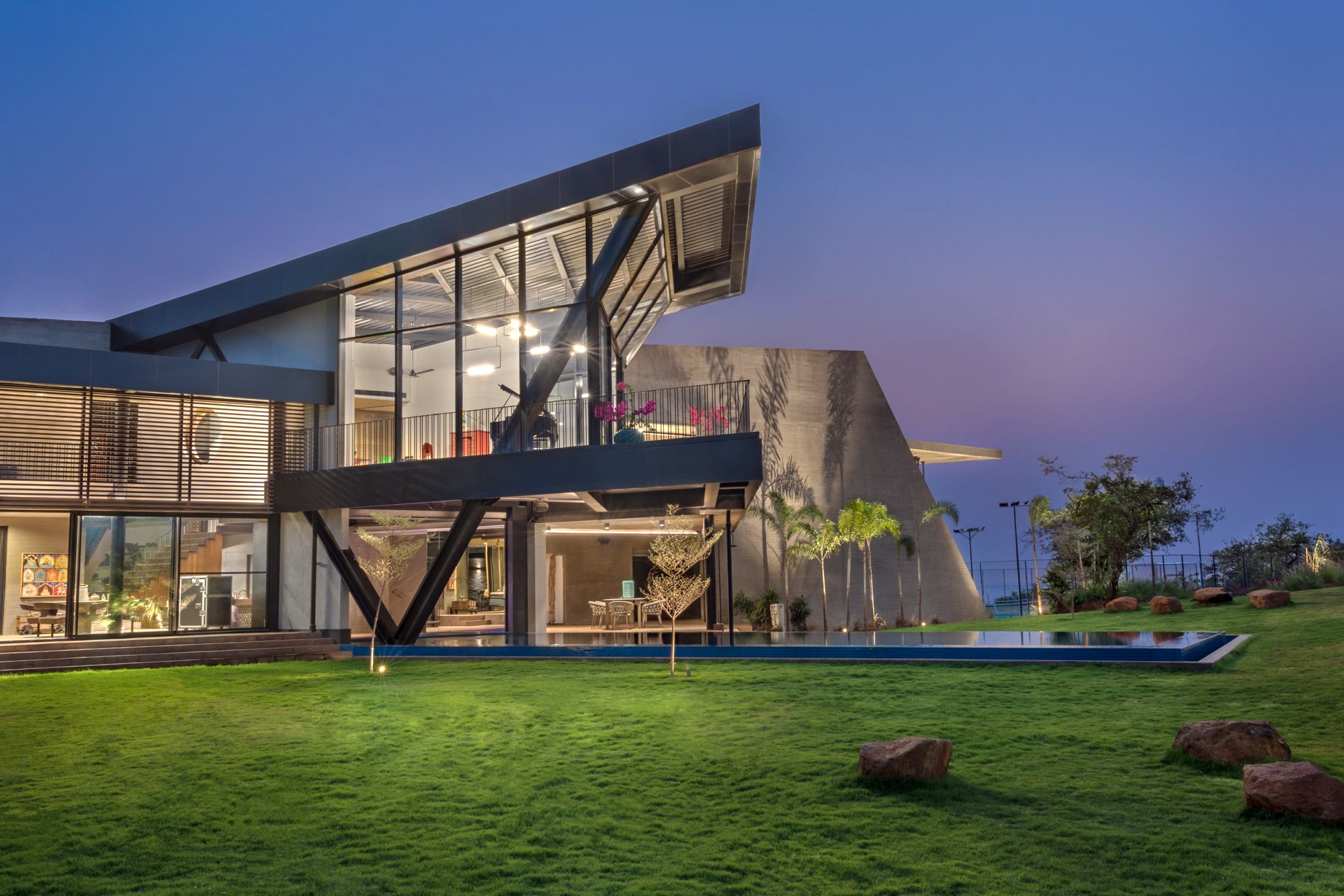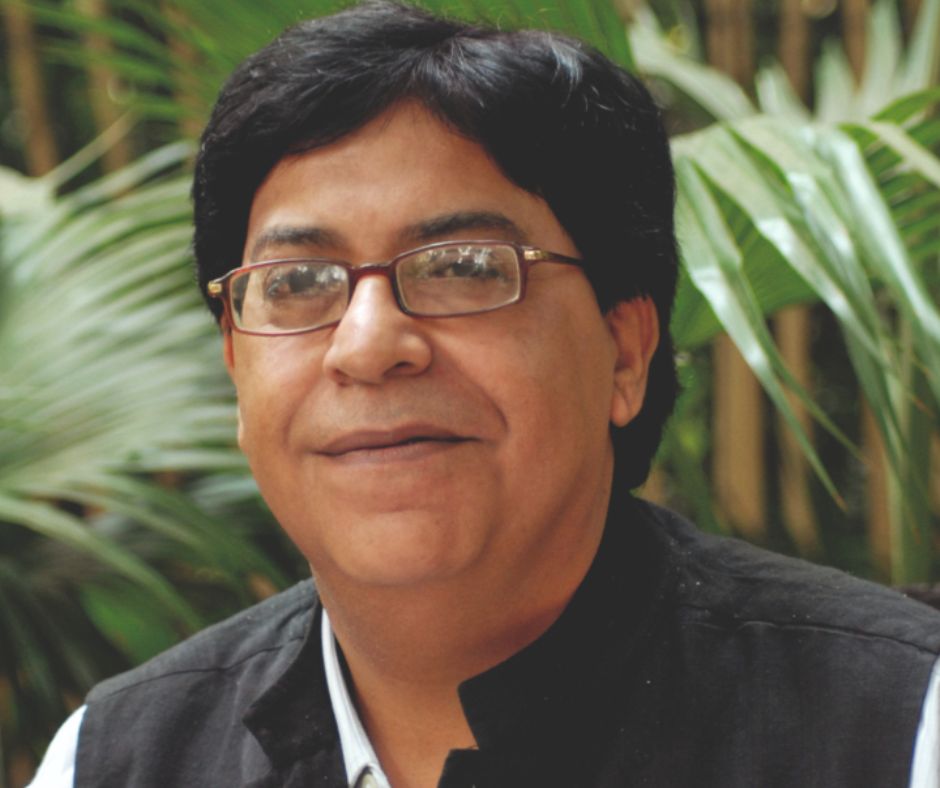This project was designed by Ar Apoorva Shroff during her time as a partner in reD Architects. Apoorva has now founded her own studio lyth Design.
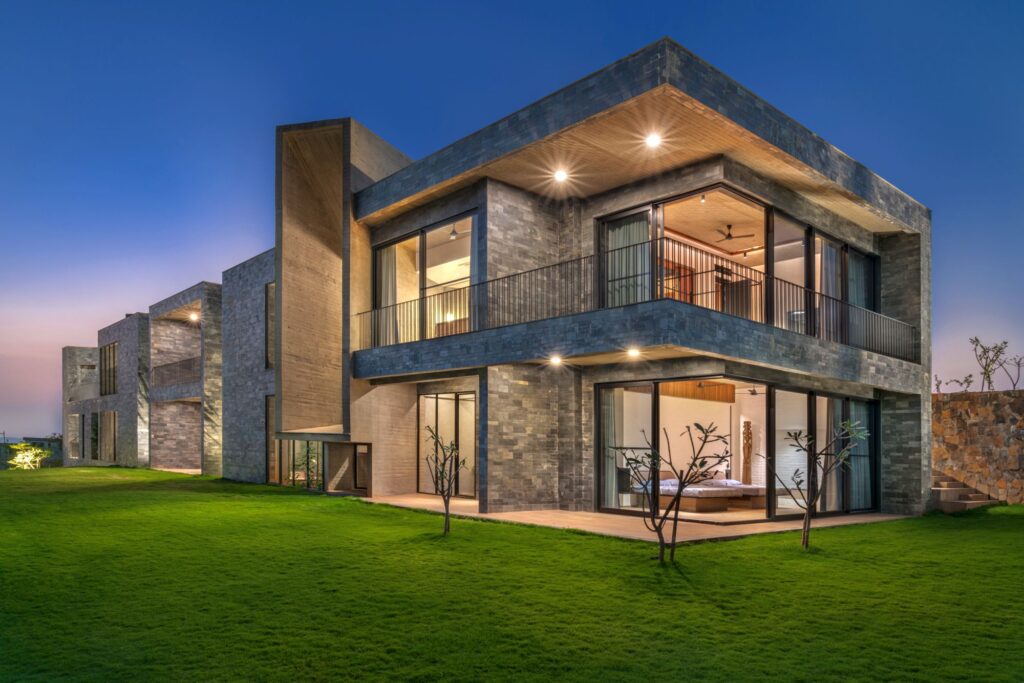
The site is located on the outskirts of bustling Mumbai, in the quiet of the Sahyadri hills. The sweeping views of the Western Ghats in almost any direction are the highlight of this otherwise simple parcel of land. The capturing and framing of these picturesque landscapes was the primary inspiration behind the design. The disruptive architecture manages to create spaces of varying scales from monumental to cozy while it integrates into the home, the nature that surrounds it. The arrival is planned at the highest level under a large canopy that appears like a wing framing the first glimpse of this home in the Clouds. The floating lotus pond at the entrance, often engulfed in mist offers a breath of fresh air after the long drive out from Mumbai.

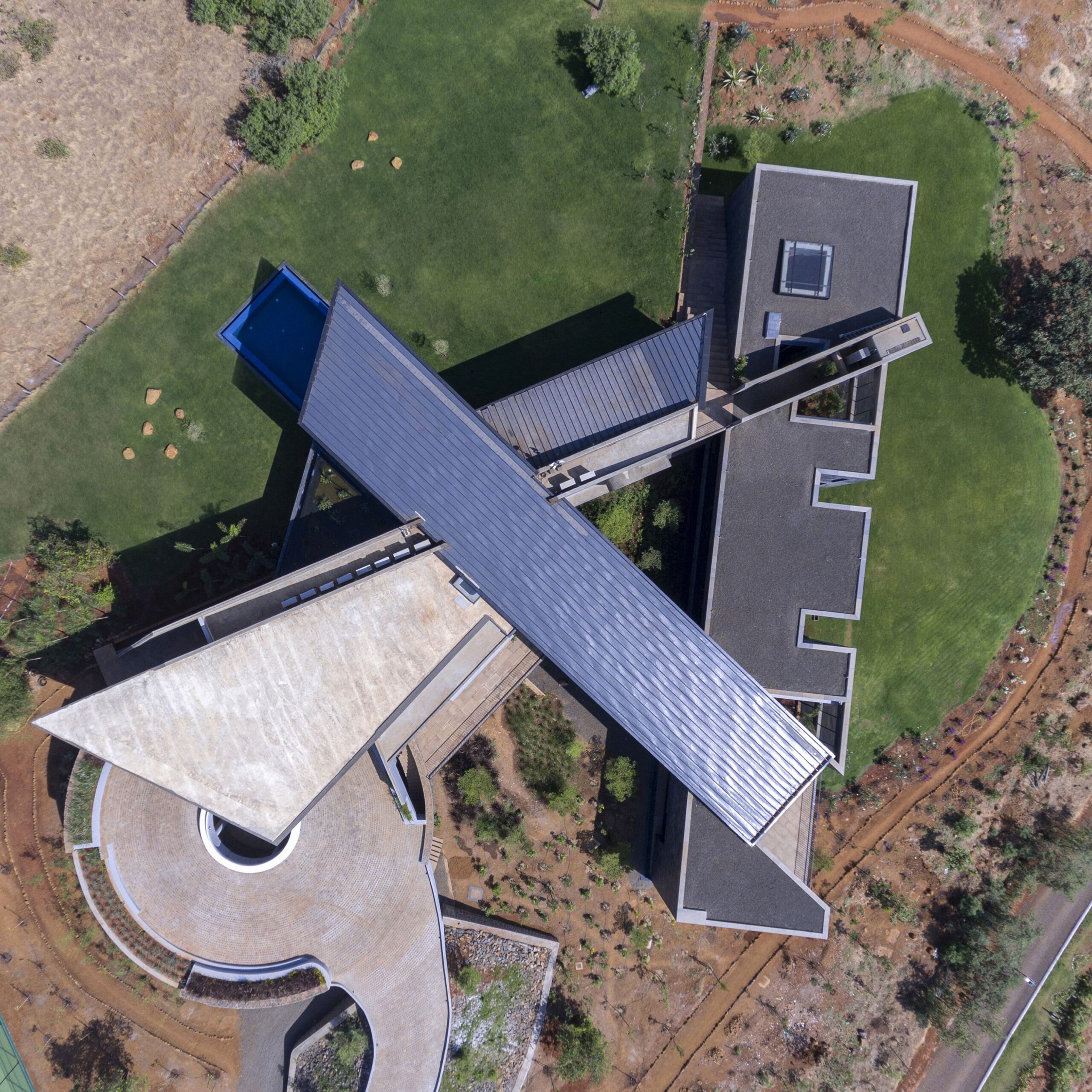
The structure is a simple intersection between concrete and metal. The resulting interstitial spaces translate into courtyards of various scales that may be habitable or simply form vantage points. Two parallel concrete walls act as the main axes cutting across the house and seamlessly connecting the three intersecting blocks which serve the respective functions of public, private and recreation. Materials have been strategically planned for the various blocks – glass and steel for the public spaces, and slate stone for the private spaces, both of which get anchored into the concrete spine. All the load-bearing walls on site have been built using stones found on site during excavation. The high ceilings, large corridors and windows planned across each other keep the house cool and ventilated with air that continuously funnels through.


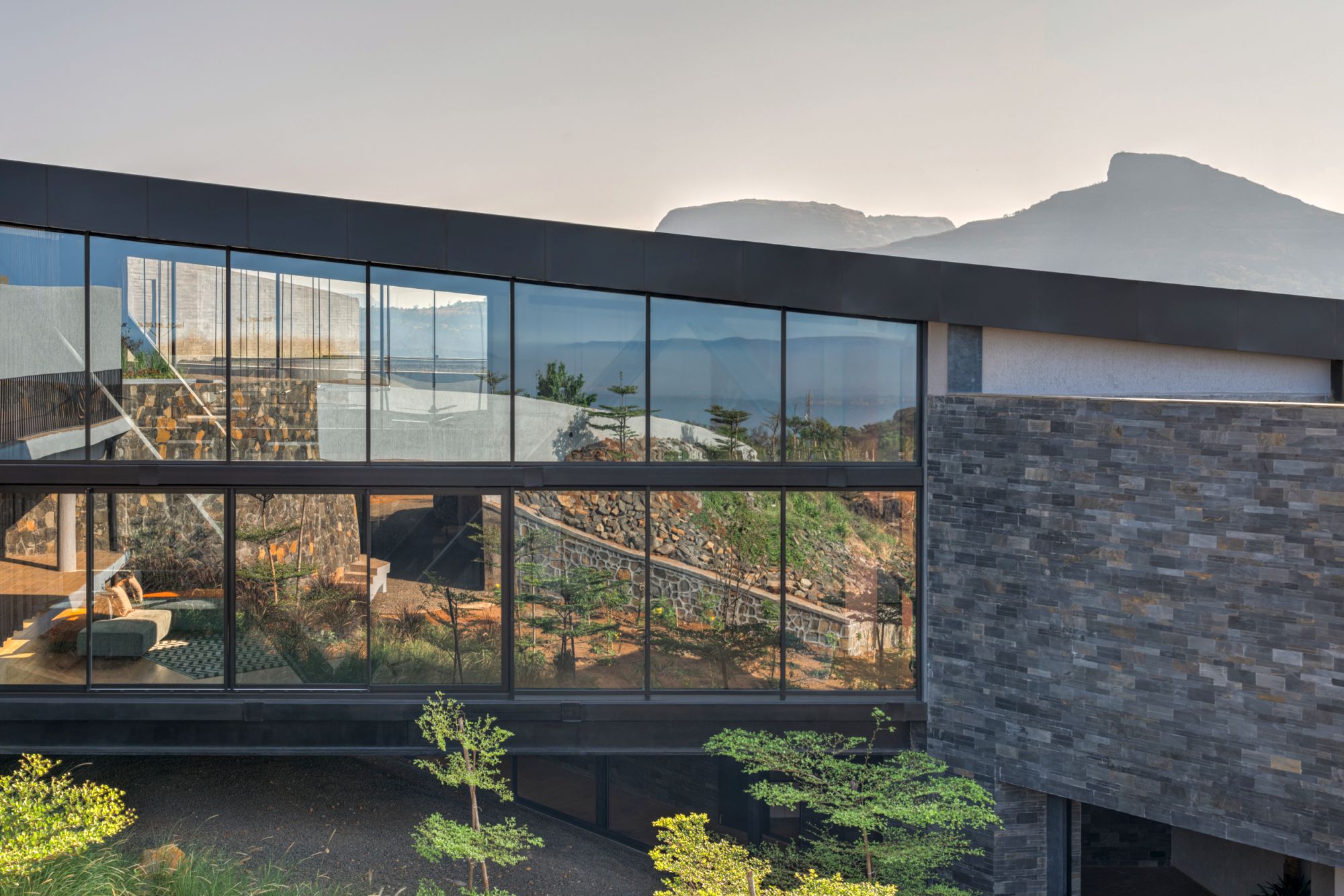

Large sliding windows manage to bring the outside in, seamlessly integrating the natural landscape with the house. Large overhangs, verandahs and the partially covered swimming pool makes spaces usable despite the extreme weather conditions of the region. The rubric of the various levels of the house is derived from the natural terracing of the land. The suspended metal block and the cantilevered southern tip allow for the natural terrain to flow under it uninterrupted.

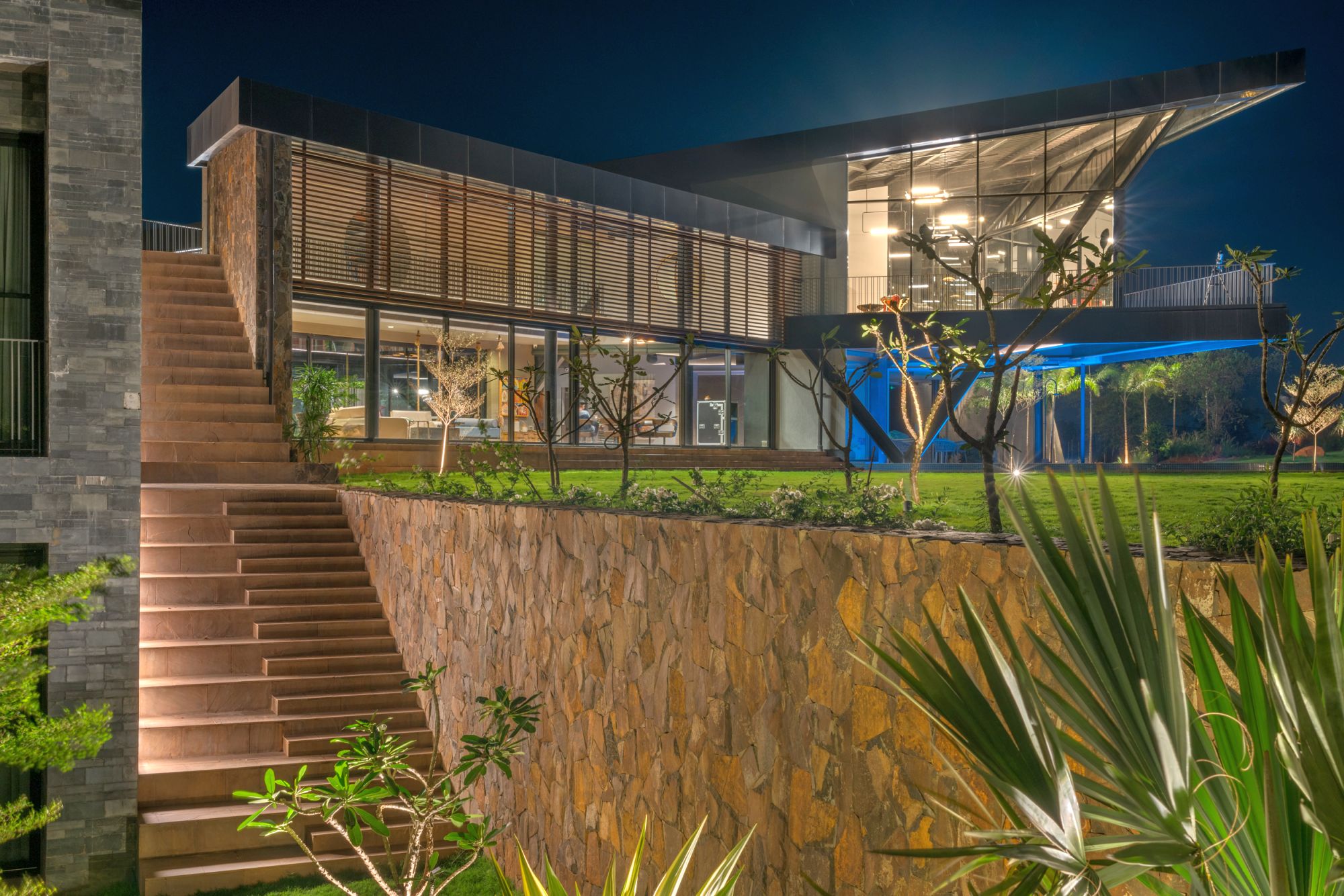
Images





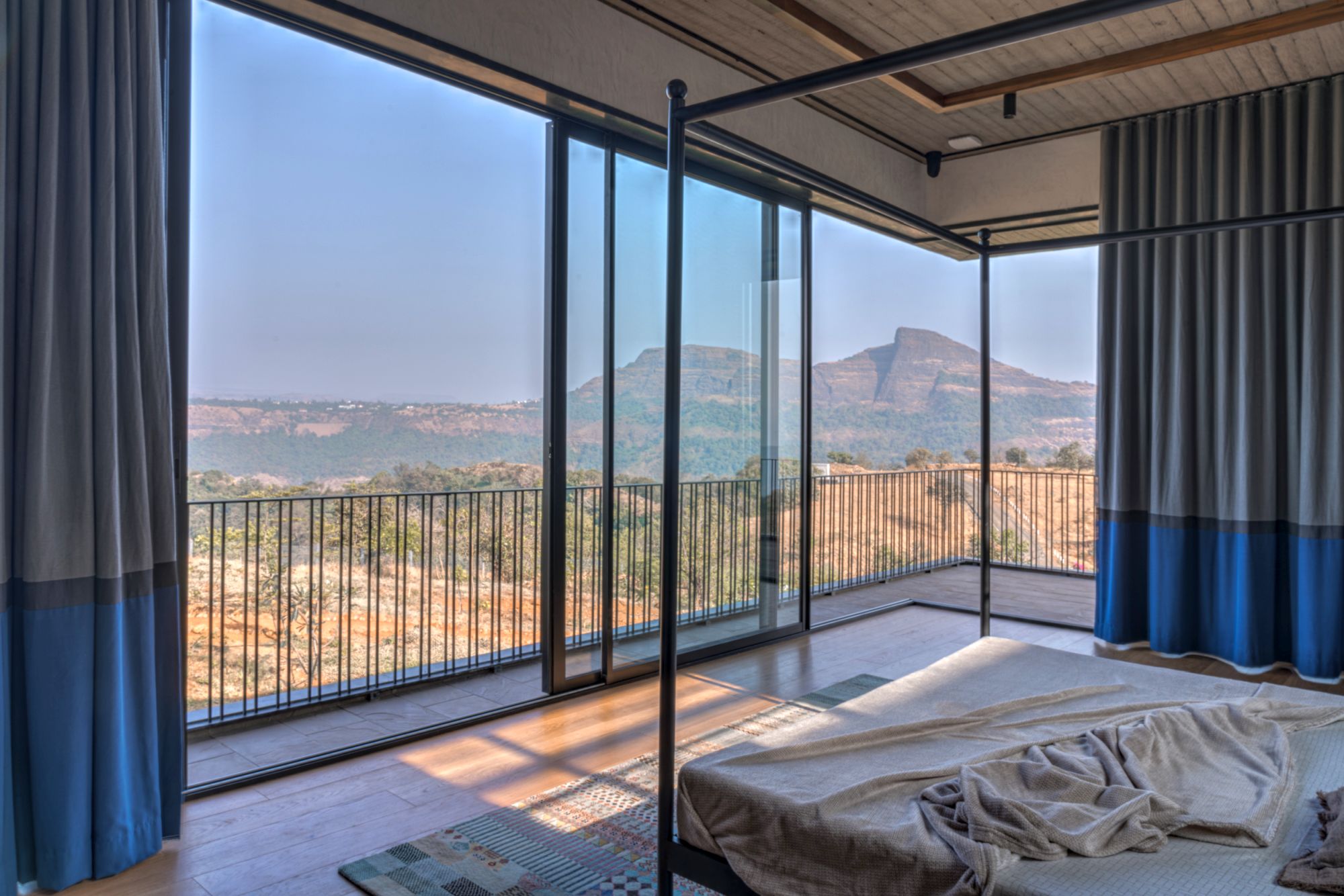
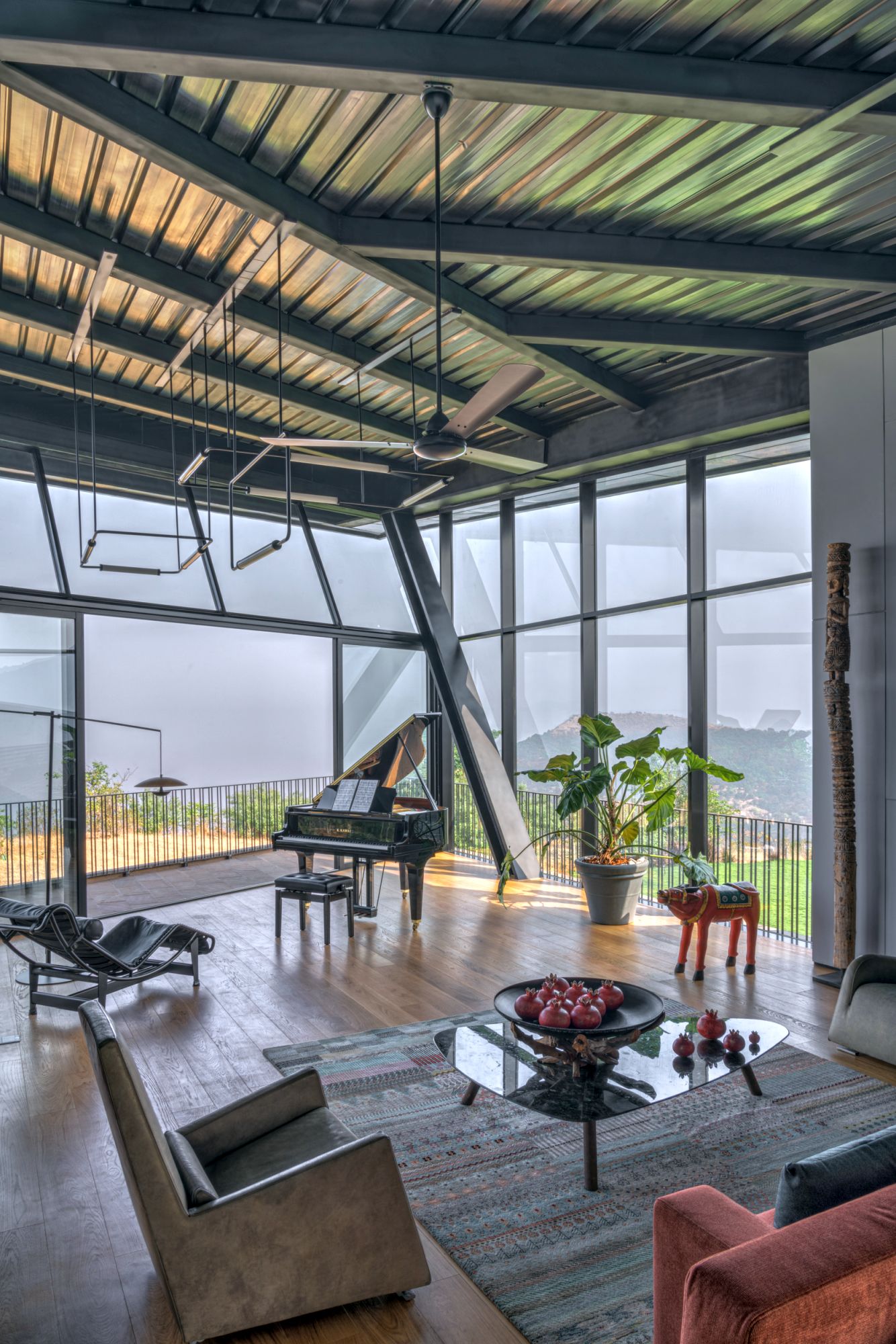

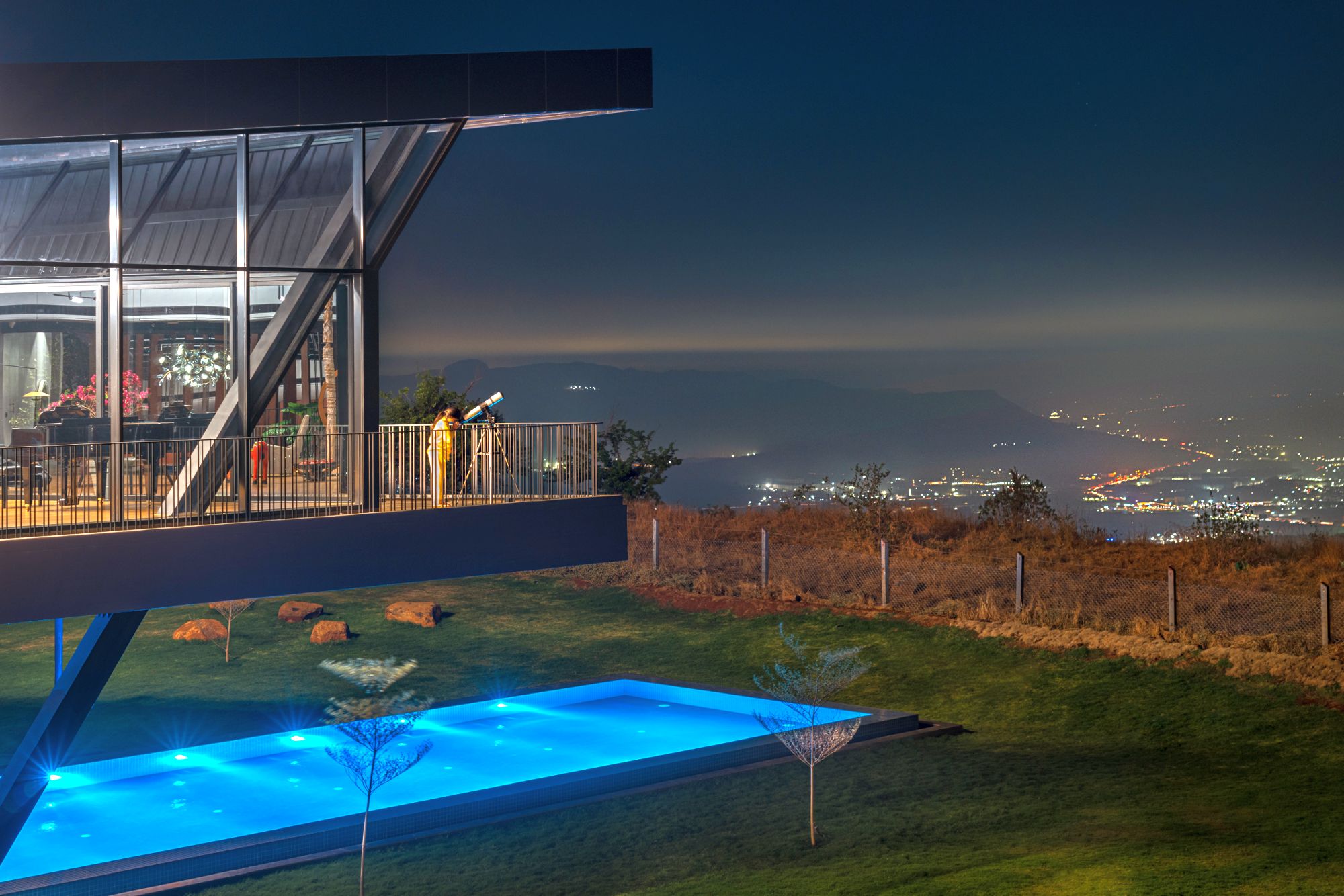




Drawings

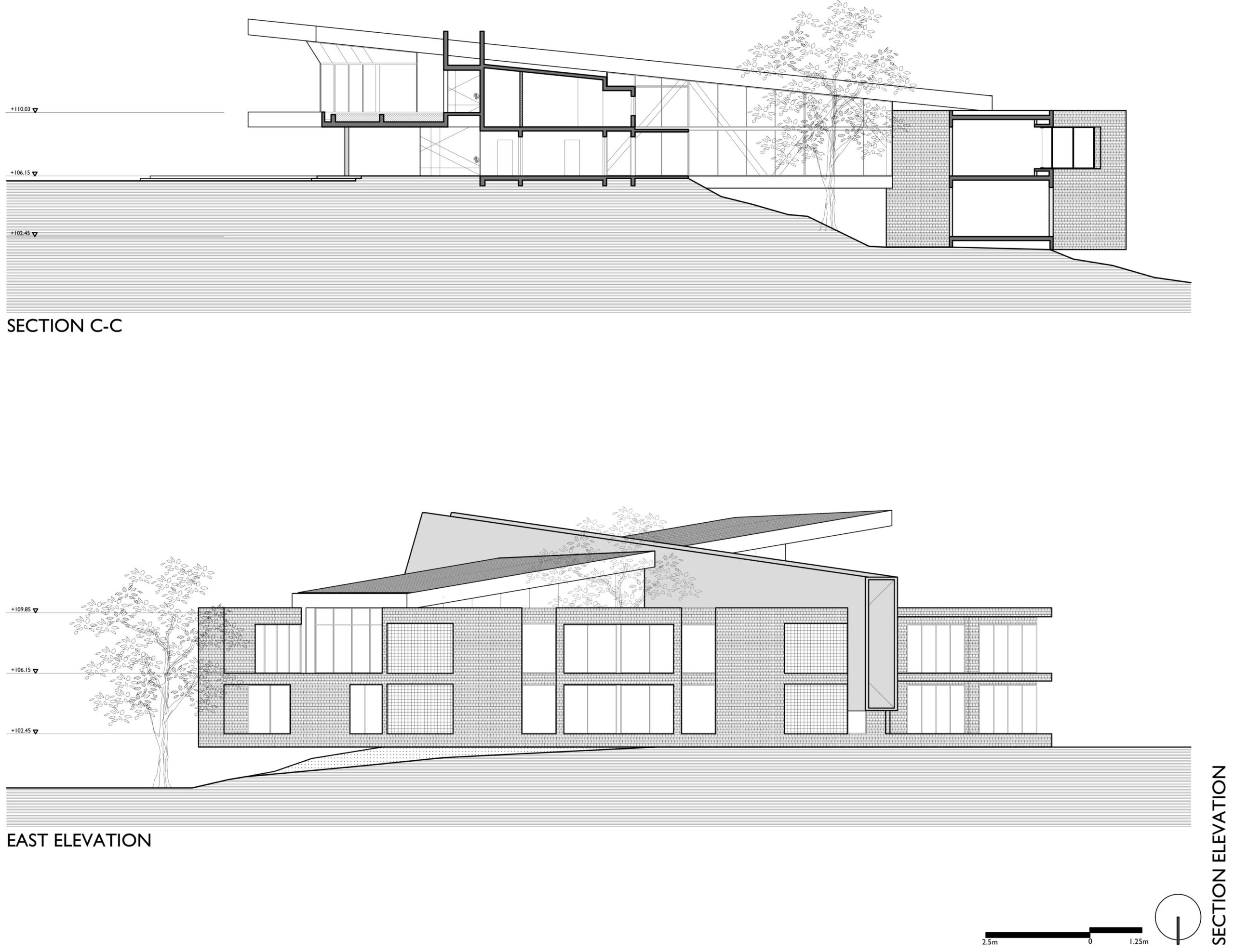
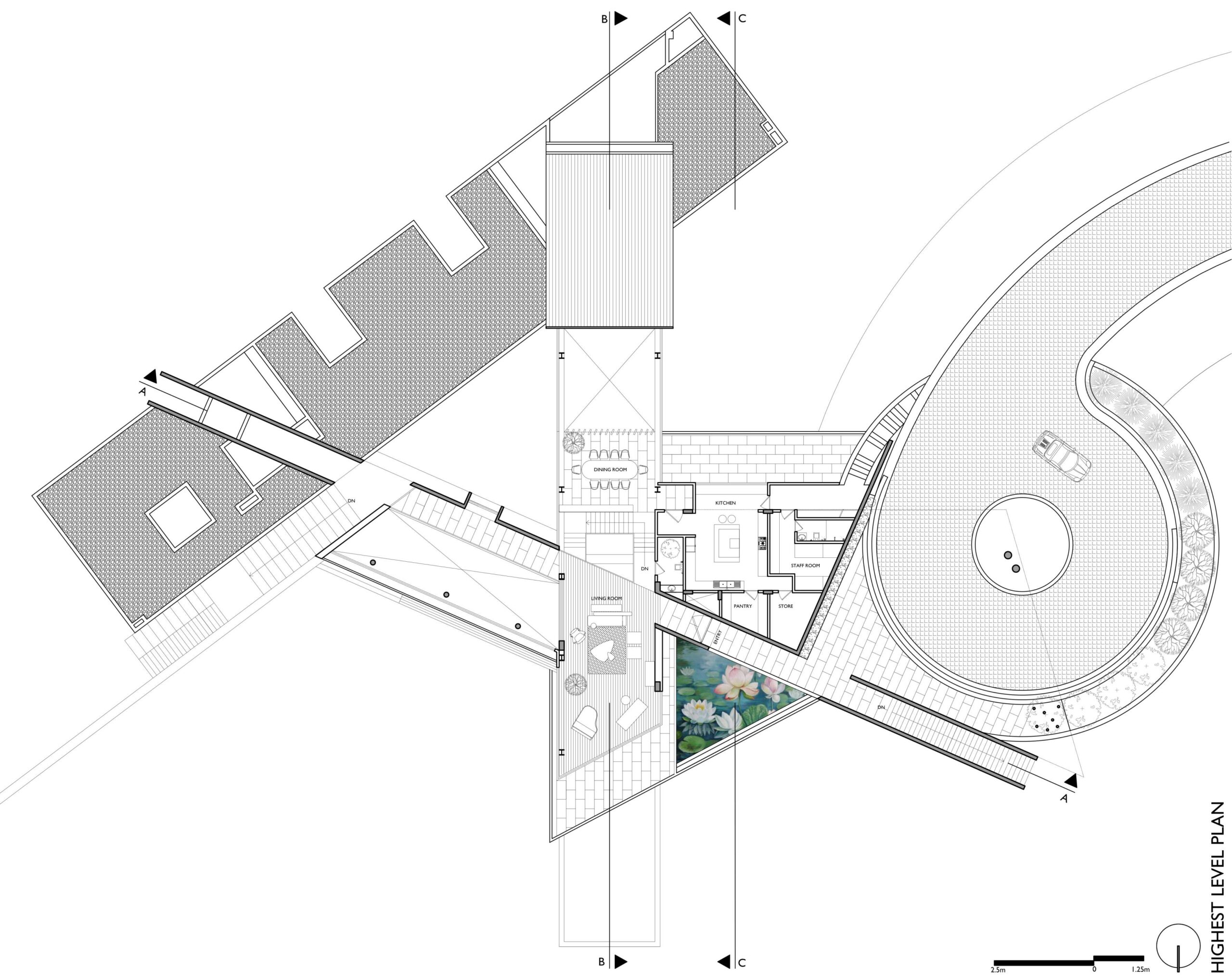
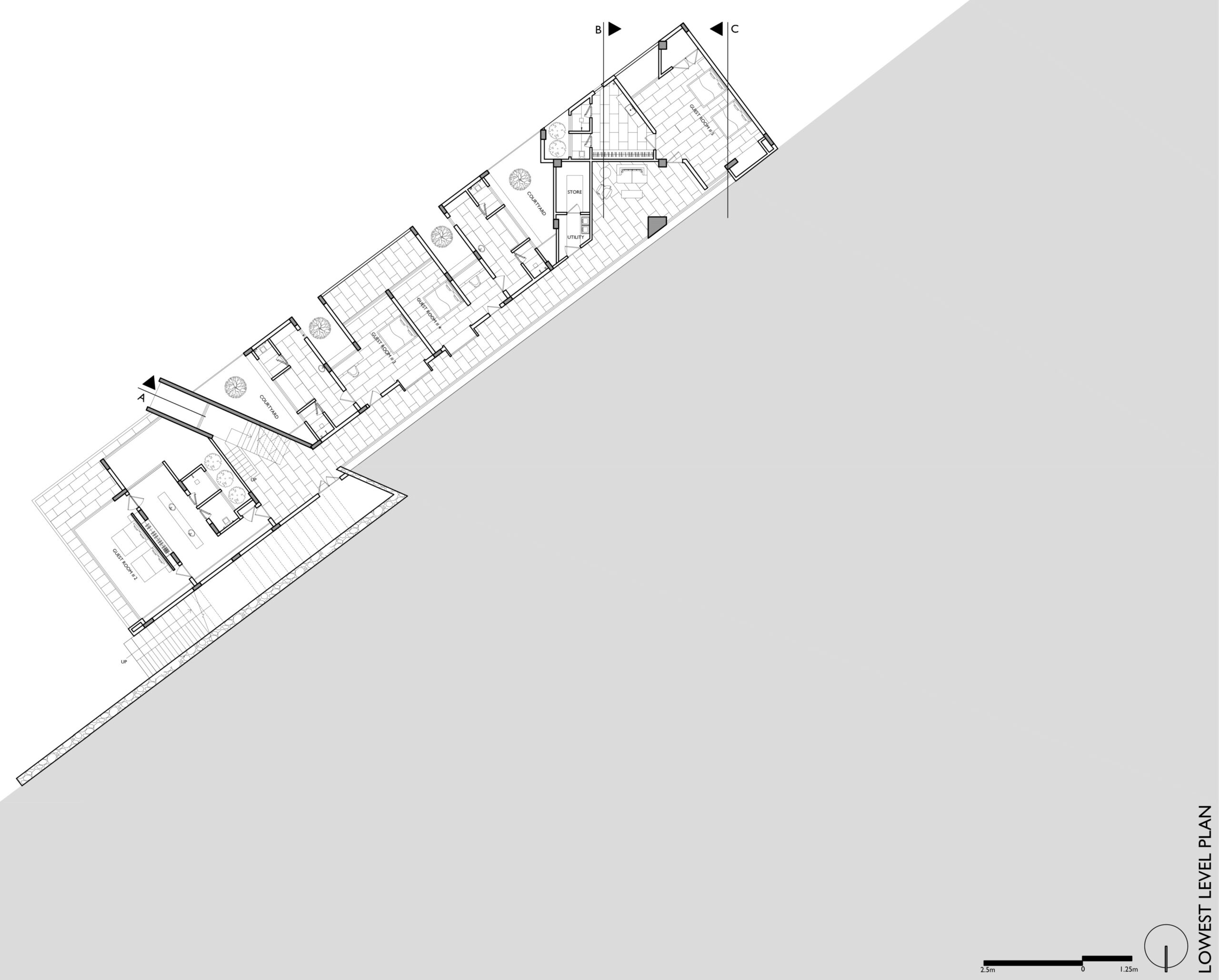
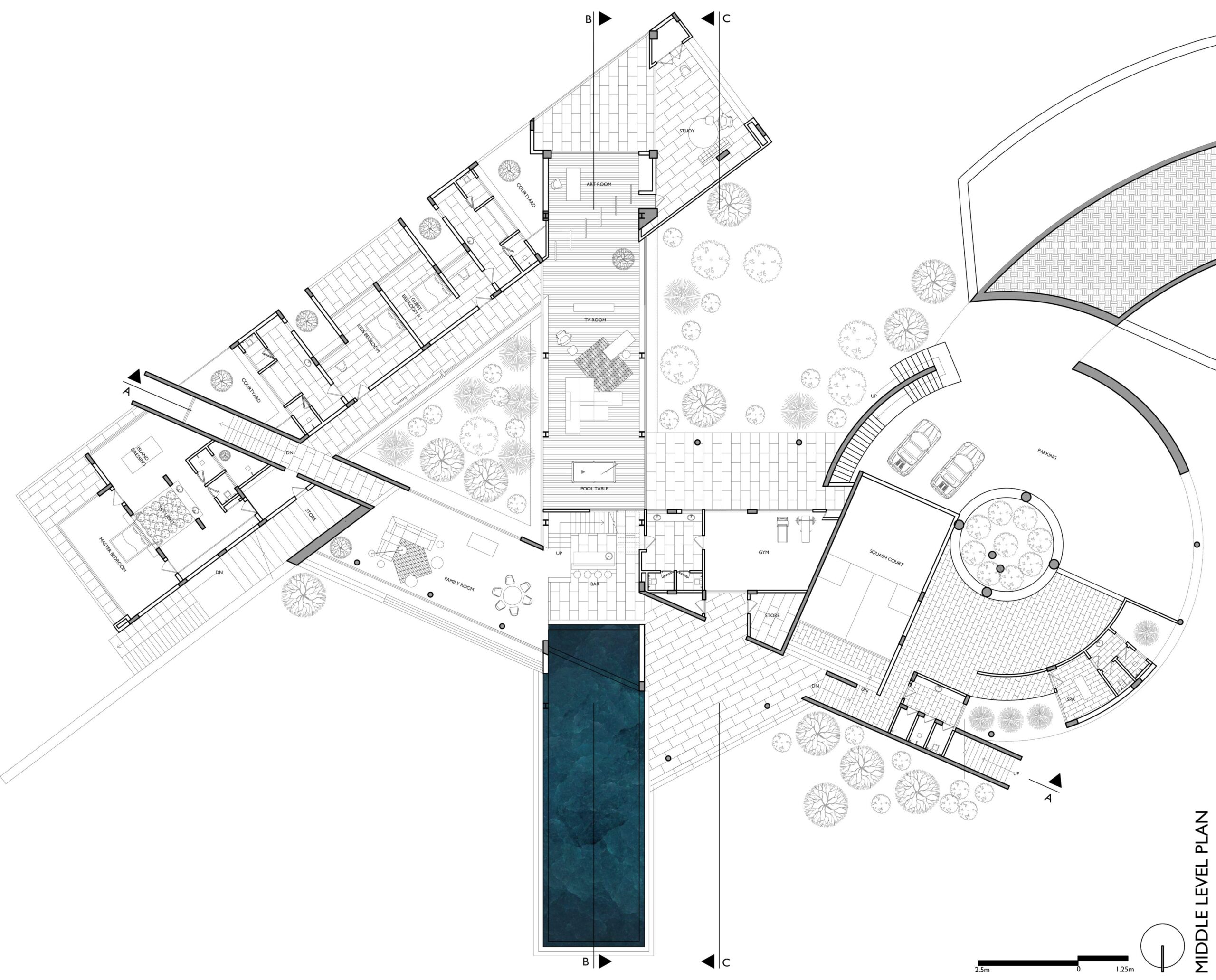
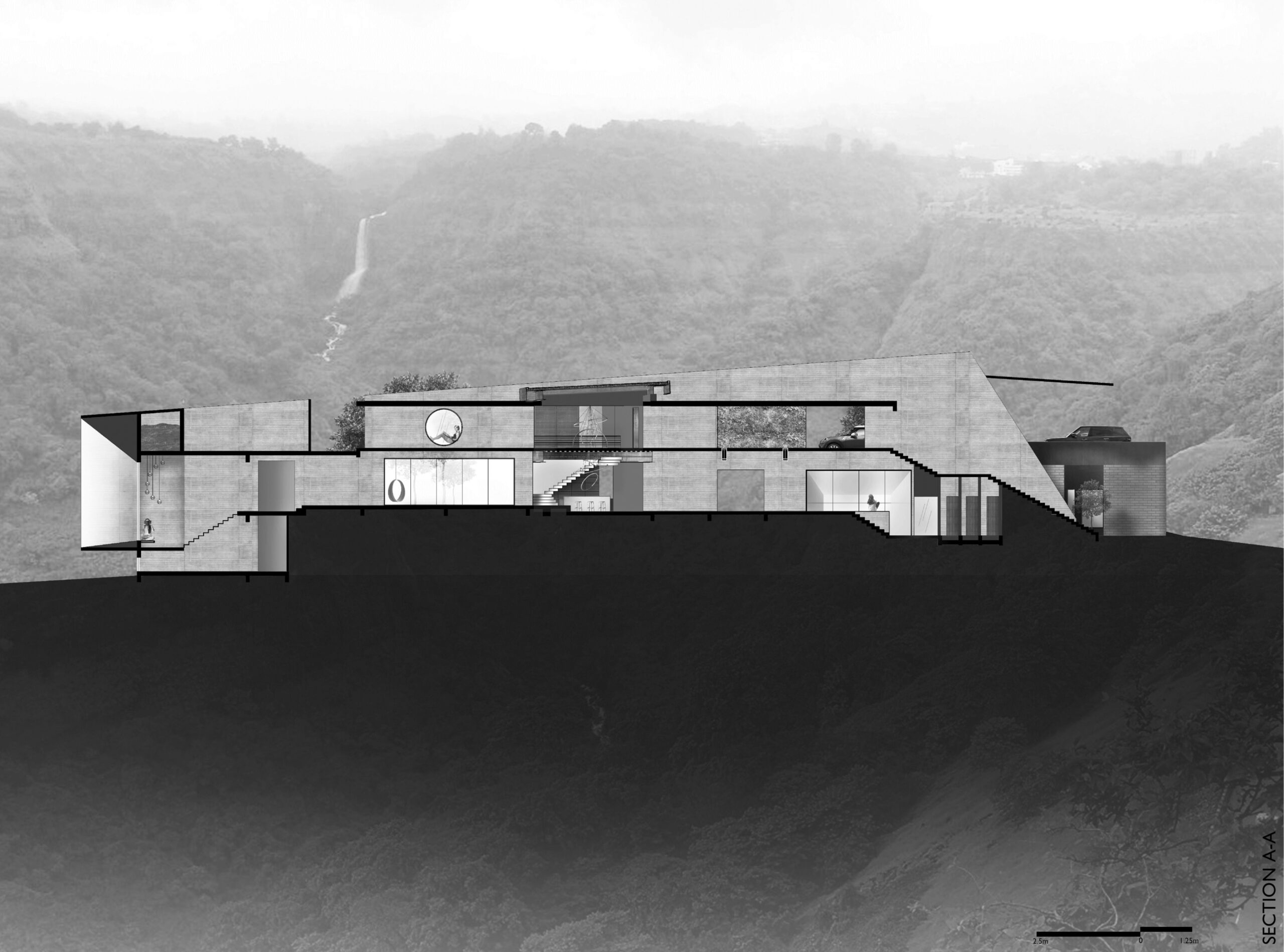


Project facts
Typology: Residential
Name of Client: Apoorva and Kunal Shroff
Name of Client’s Firm: lyth Design
Principal Architect/Designer: Apoorva Shroff
Design Firm: reD Architects
Design Team: Shivam Patel, Rohit Jain
Site Area (sq. ft & sq. m): 7 acres
Built-Up Area (sq. ft &sq. m): 30000 ft²/2,790m2
Completion Date: Dec 2020
Photographer: Fabien Charuau
Consultants
Electrical: decor
Landscape: Professional Landscape Designs
Builders and Contractors
Structural: Global Engineering Services
Electrical: Decor
Civil: Unique Concrete Technology
Landscape: Professional Landscape Designs
Plumbing: Decor

